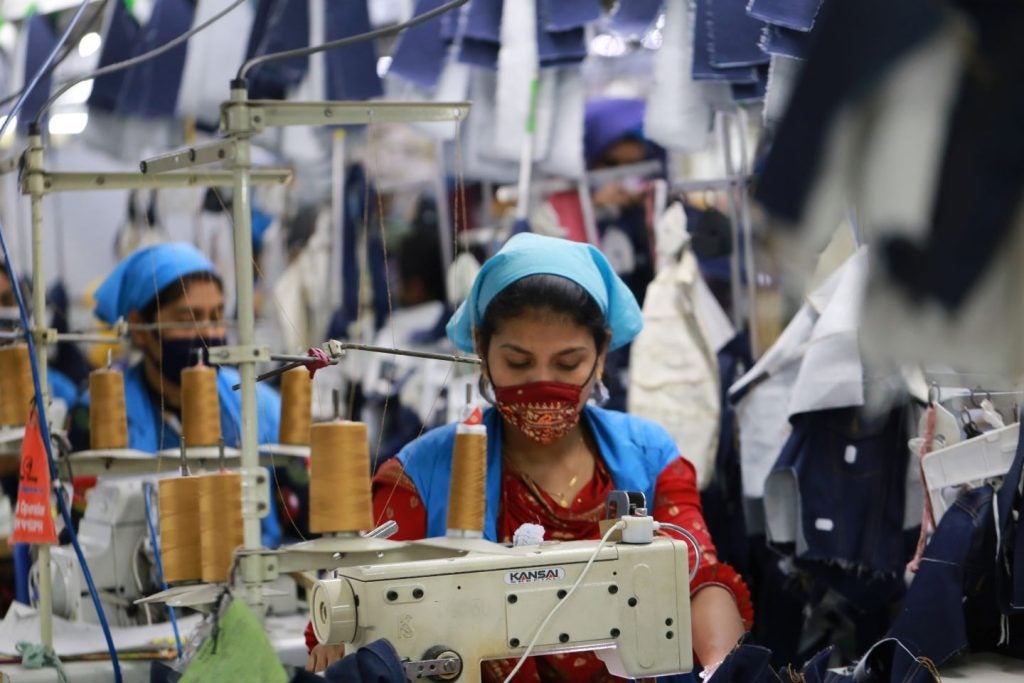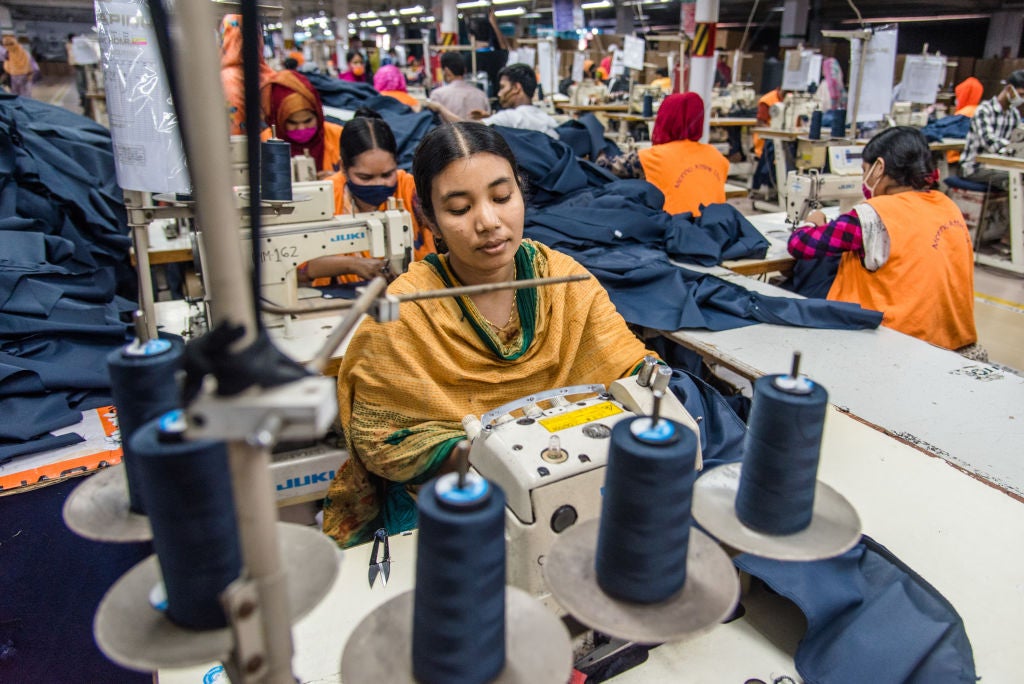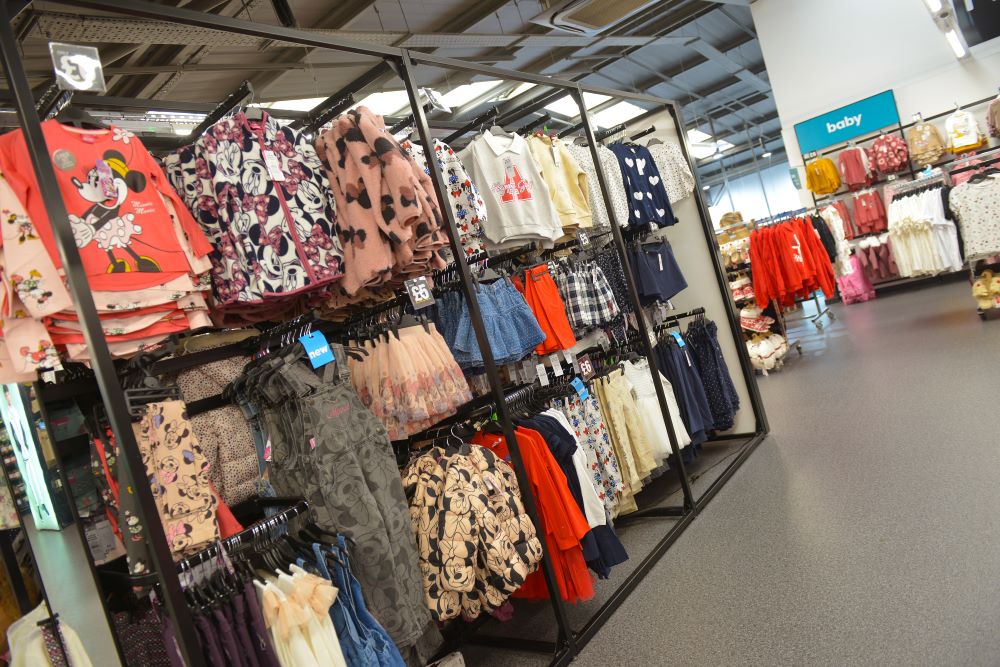Over the nine-month period, the apparel supplier to see the biggest decline was Cambodia, with shipment volumes falling 32.9% to 759m SME.
Interestingly, with the US push to diversify apparel sourcing away from China, one might be inclined to believe the wider Asia and Central American regions might benefit.
But Pakistan saw the next biggest fall in shipment volumes over a nine-month period at 30.1% to 511m SME.
Bangladesh closely followed with a shipment volume decline of 29.4% to 1.76bn SME in the nine-month period while Indonesia saw a shipment volume of 29.3% to 787m SME.
Honduras shipment volumes declined 26.6% over the nine months to 524m SME and Vietnam’s fell 26.5% to 2.94bn SME.
China, the largest apparel supplier to the US, saw shipment volumes reduce by 23.9% over the period to 6.77bn SME.
India’s shipment volume growth was a negative 22.6% to 959m SME.
Nicaragua and Mexico both saw more modest declines over the nine months at 12.3% to 446m SME and 11.9% to 536m SME, respectively.
A breakdown of US apparel import performance in September
Shipments from all sources to the US came in at 2.37bn SME with China making up the largest amount in shipment volume terms at 967m SME.
This was followed by:
- Vietnam at 375m SME
- Bangladesh at 181m SME
- Cambodia at 107m SME
- India at 103m SME
- Indonesia at 100m SME
- Pakistan at 61m SME
- Honduras at 58m SME
- Nicaragua at 51m SME
- Mexico at 48m SME
Commenting on the latest set of data, Dr Sheng Lu, associate professor in the Department of Fashion and Apparel Studies at the University of Delaware, explains the fall in September came down to uncertainties in the US and world economy and consumers’ stagnant demand.
“Specifically, US apparel imports in September 2023 were 11.6% lower in quantity and 23.1% lower in value from a year ago. After removing the seasonal factor, apparel imports in September were still 1.4% lower in value and flat in quantity compared to August 2023. Notably, nearly all major international institutions, from the World Trade Organization (WTO) to the World Bank, have recently revised their projections, expecting global trade to grow even more slowly in 2023 than initially anticipated.”
With Bangladesh suffering the biggest drop in apparel imports, down almost 30% in quantity and value, Lu suggests this comes down to US fashion companies typically sourcing large-volume items from Bangladesh, making the country particularly sensitive to weakened import demand and; the treatment of Bangladesh as a low cost sourcing destination that serves the needs of the value market.
“Working-class US consumers were under more severe economic stress and had to cut their clothing expenses more substantially. Thus, when measured by the number of stock-keeping units (SKUs), more clothing items were launched in the luxury and premium market segments of the US retail market in 2023 compared to the previous year, while fewer were introduced in the value market segment.”
Market share changes for the top 10 apparel suppliers to the US
It’s interesting at this point of the year to observe how market share has shifted for the top 10 suppliers of apparel to the US.
The most notable development is the growth being captured in the Central America region. Mexico has seen a staggering 2% rise in market share during September and on a year-to-date basis, market share grew 0.4%. Market share for Nicaragua rose 0.3% during the same period.
The only other regions to capture market share growth were China, interestingly, at 0.6% and India at 0.2%.
Lu says: “China slightly recovered its market share in September 2023. Specifically, China contributed more than 40% of US apparel imports in quantity and 24% in value in September 2023, the best performance for the country so far in 2023.
“Notably, US companies still import far more different styles of clothing from China than any other Asian country. For example, in the first nine months of 2023, about 56,000 SKUs of “Made in China” were newly launched to the US market, five times more than Vietnam (about 10,000 SKUs) and over ten more times than Bangladesh.
“Firm-level studies also show that fashion companies’ contracted garment factories in China overall were much smaller than those in Bangladesh and Vietnam. This suggests China is increasingly treated as an apparel sourcing base for flexibility and agility, particularly those orders that may include a greater variety of products in relatively smaller quantities.”
















